'It has to be in your heart': NIAs fight to improve life in mostly poor areas of Topeka
With little recognition and no pay, Topeka Neighborhood Improvement Association members have toiled for decades to make life better in the mostly poor areas where they live.
That's been frustrating at times in a city where officials and the NIAs don't always agree, veteran members of those groups told The Capital-Journal late last month.
Still, those volunteers keep fighting because they love their neighborhoods and know that "if we don't do it, nobody else will," said ShaMecha King Simms, president of the Historic Old Town NIA.
King Simms described herself as being "NIA until I die."
She expressed pride about the dedication and devotion her fellow Topeka NIA members show regarding the low- and moderate-income neighborhoods where they live.
"They could move out of their neighborhoods if they wanted to, but they don't, because they love them," she said. "And that passion — you can't buy that. It has to be in your heart."
What is an NIA?
Members of Topeka's 21 NIAS meet regularly to organize and carry out efforts to beautify, safeguard and create a vibrant community in the neighborhoods where they live, the city's website says.
Members give input to Topeka's city government about matters that include street conditions, crime prevention, lighting, development and preservation.
For it to be able to have an NIA, 51% or more of the households in a neighborhood must have incomes less than 80% of the Topeka-area median income, as determined by the federal Department of Housing and Urban Development.
The NIAs play a key role in carrying out the "Topeka Dreams" initiative through which the city earmarks more than $3 million in funding from the federal Department of Housing and Urban Development to make neighborhood improvements.
The NIAs also provide a key connection between low- and moderate-income residents and Topeka's city government, said Nellie Hogan, 87, a member for more than 30 years of southeast Topeka's Hi-Crest NIA.
"We tell everybody, 'If you have a problem, here's where you can get some answers,'" she said. "You may not solve it, but you'll find out how to solve it. And that is a big thing for me. Poor people don't know where to go for what they need."
NIA 'graybeards' were among those who met with newspaper
Tennessee Town NIA president Michael Bell helped arrange for The Capital-Journal to interview various NIA residents at a meeting last month about their accomplishments, sacrifices and concerns.
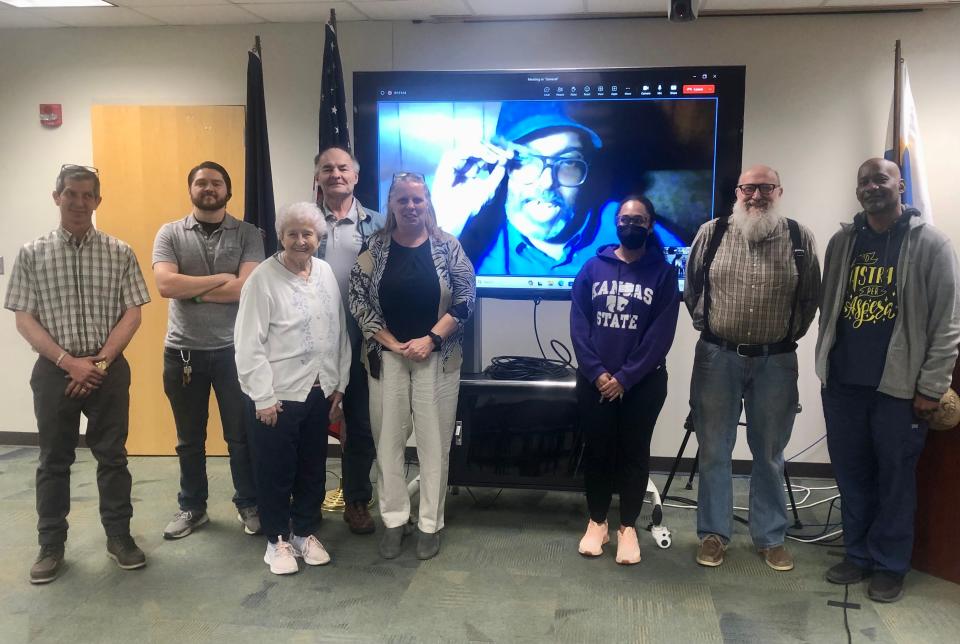
The city's department of community engagement provided the meeting site in the city's Holliday Building at 600 S.E. Madison.
Bell, who took part by Zoom, said he sought in particular to ensure that those at the meeting included fellow "graybeards" who have spent many years in the "wild and wonderful world" of neighborhood service.
Bell said he thinks the work done by Topeka NIAs goes largely unnoticed — and needs to be recognized.
Early NIA officers are now namesakes of parks
One of the early NIA advocates was Hogan.
Hogan recalled teaming up with Betty Dunn and Betty Phillips to advocate fiercely for Hi-Crest decades ago as they served among the early leaders of that NIA.
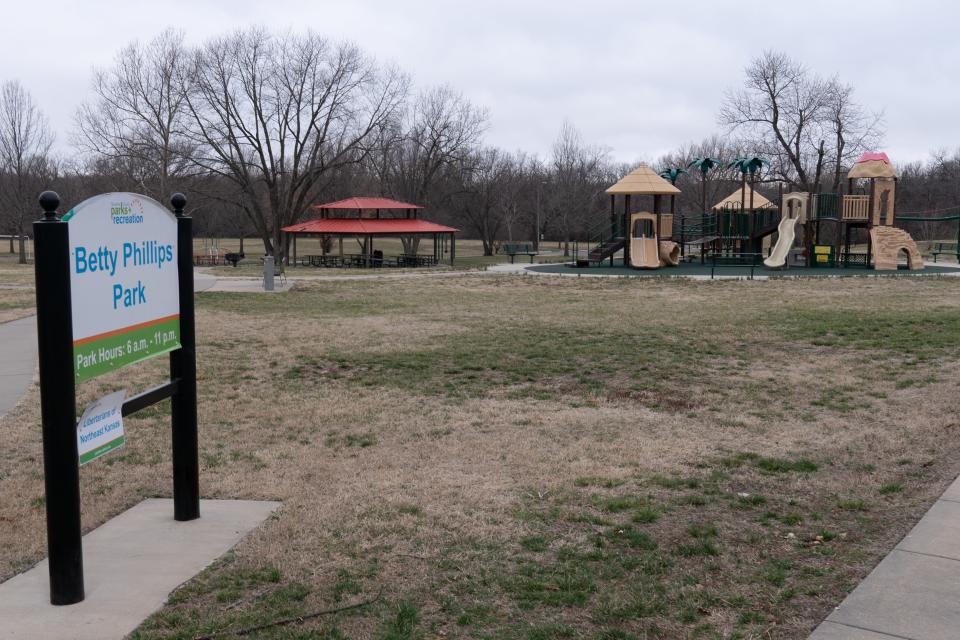
One now-deceased mayor called them "the bitches from hell," Hogan said.
Bell, Dunn and Phillips and the late Clara Simmons — who worked for the Topeka Human Relations Commission — are "heroes in this city who really gave other people sort of the green light to have a voice, and not to be afraid of having that voice," said longtime community activist Lazone Grays.
Hogan, Phillips and Dunn are now the namesakes of Betty Dunn Park, 3300 S.E. Adams; Betty Phillips Park, 3303 S.E. Irvingham; and Nellie Hogan Park, 1230 S.E. Pinecrest Drive.
Hogan and Phillips still belong to Hi-Crest NIA.
Dunn, a Topeka City Council member from 1995 to 2003, lives in another state.
'Get rid of the drug dealers'
In the Hi-Crest NIA's early days, Hogan said, the group's membership was high because members wanted to do something about the high crime they were seeing.
The NIA organized neighborhood patrols and held marches in which residents carried signs bearing such messages as "Get rid of the drug dealers," Hogan said.
Topeka's city government took notice and began working more actively to help make the area safe, she said.
Crime dropped to the point where residents didn't feel they needed to patrol any more, Hogan said.
She said she moved "out to the country" in 1994 but kept her house in Hi-Crest, where she remained with the NIA. Hogan moved back in 2013.
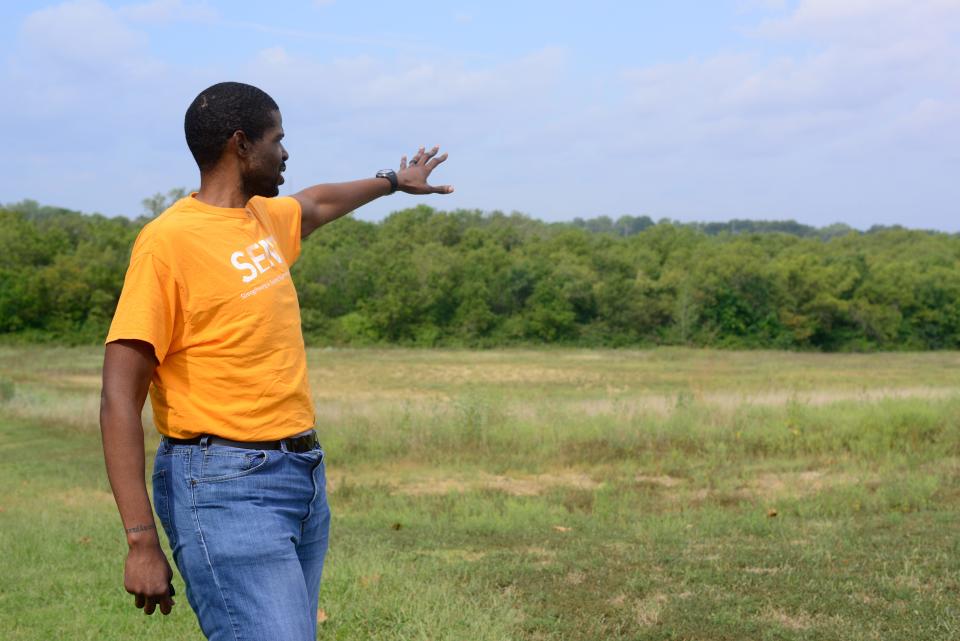
'I hope I live long enough'
Meanwhile, many aging Hi-Crest residents died or moved away, Hogan said.
Their houses were often bought by "slumlords," who rented them out to people who weren't good neighbors, she said.
The area's condition once again deteriorated, Hogan said.
But she said she's part of an effort through which Hi-Crest is now "turning it around again."
The nonprofit group SENT Topeka, which strands for "Strengthening and Equipping Neighborhoods Together," has built four houses there as part of its campaign to revitalize the neighborhood from within.
Hogan spoke excitedly about the planned creation of a "Fremont Hill" development featuring businesses, a community center, a health clinic and affordable housing along S.E. Fremont Street.
"It will be a wonderful addition," Hogan said. "I hope I live long enough to see all of that."
'A gladness of heart'
Donald Fortin, who's been president of central Topeka's Tennessee Town NIA during three different years, recalled being harassed by street gang members after he moved to that neighborhood in about 2000.
"There were a few times I actually had to run home," he said. "I'm a grown man. I had to run home."
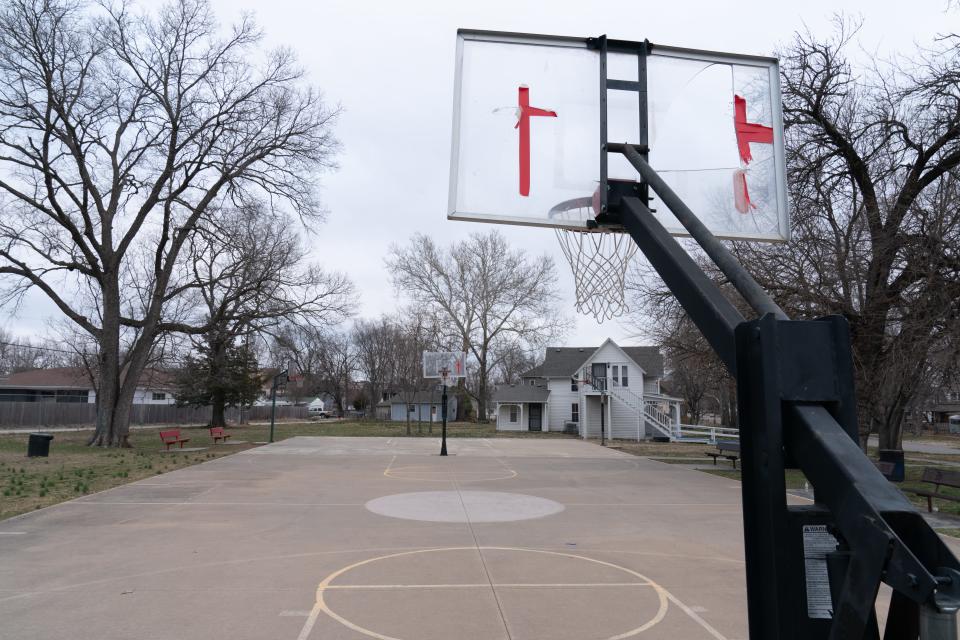
But the Tennessee Town NIA helped bring about two changes that caused crime to decrease "immensely," Fortin said.
One involved putting in a basketball court near S.W. Lincoln and Munson, he said.
The other involved putting up bright lights along S.W. Washburn Avenue and Lane Street.
"The runway lights really did turn the night into day, and crime just went away," he said.
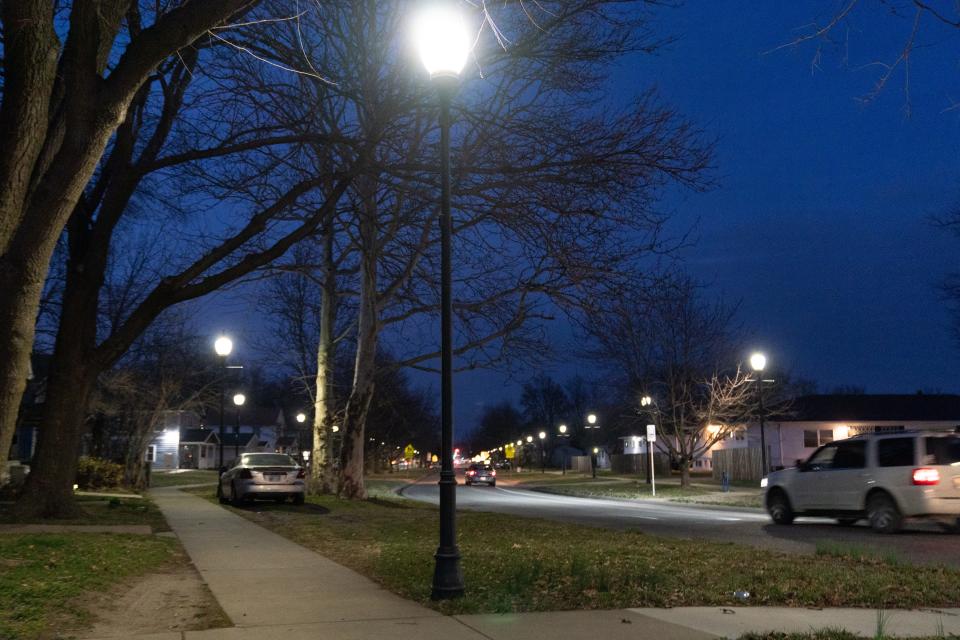
Fortin said he gets a "gladness of heart" when he sees the good the Tennessee Town NIA has been able to do "by banding together as an NIA and getting a project up, running and accomplished."
Losing schools
NIA members expressed concern in particular about how low- to moderate-income neighborhoods suffer when schools close in those areas.
Hogan recalled how Avondale East Elementary School, at 455 S.E. Golf Park Blvd. in Hi-Crest, closed in 2012 after being open since 1954.
Valley Park NIA's Jaci Patterson talked about how residents in the surrounding area were negatively affected by the 2022 closing of Stout Elementary School, 2303 S.W. College Ave.
Both buildings have since been put to positive use, Hogan and Patterson said.
Still, Hogan said, lamented the loss of Avondale East, which she said "brought people together."
Older people who lived in the area would attend activities at the school, which became a community gathering place, she said.
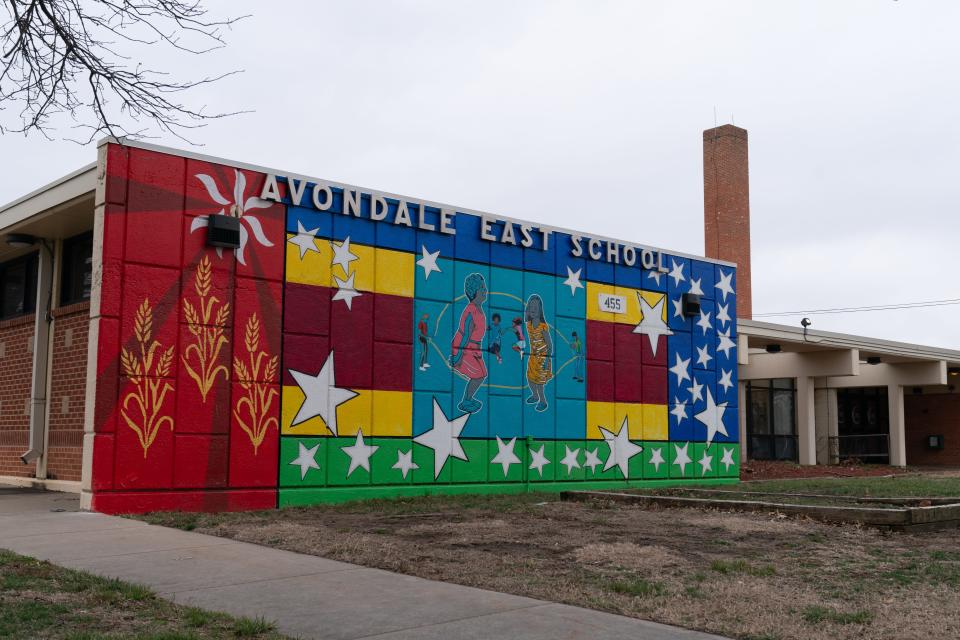
King Simms said neighborhoods lose their "connectedness" when they lose gathering places.
"So when we talking about fighting for Stout and when we talk about losing Avondale East, this doesn't come from a place of selfishness," she said. "It's an awareness that 'If we lose this, it's going to be hard to get back.'"
Topeka's low- and moderate-income neighborhoods also suffer when real estate agents promote the houses in their communities to potential buyers as being good places to buy and rent out, house temporary employees or establish Airbnbs for short-term rentals, King Simms said.
NIA members generally don't get into a lot of conversations with "people who have money," so they have to rely on Topeka's city government to help them make connections that might bring about investment in their communities, she said.
King Simms is running in the August primary election against Vic Miller and Patrick Schmidt for the Democratic nomination in the newly drawn District 19 in the Kansas Senate.
What sacrifices do NIA members make?
NIA members sacrifice a lot for their communities, devoting considerable time and effort to attending monthly meetings and planning and organizing projects, Fortin said.
Members think often about "what will work, what will be effective and what will improve people's lives," he said.
The work also includes finding volunteers to help with neighborhood projects and dealing with fellow neighborhood residents who can be "obstinate" and "stubborn," Fortin said.
Trying to work with city of Topeka staff members can also be frustrating, "because they're not always on board with how you'd like to see things happen," Fortin said.
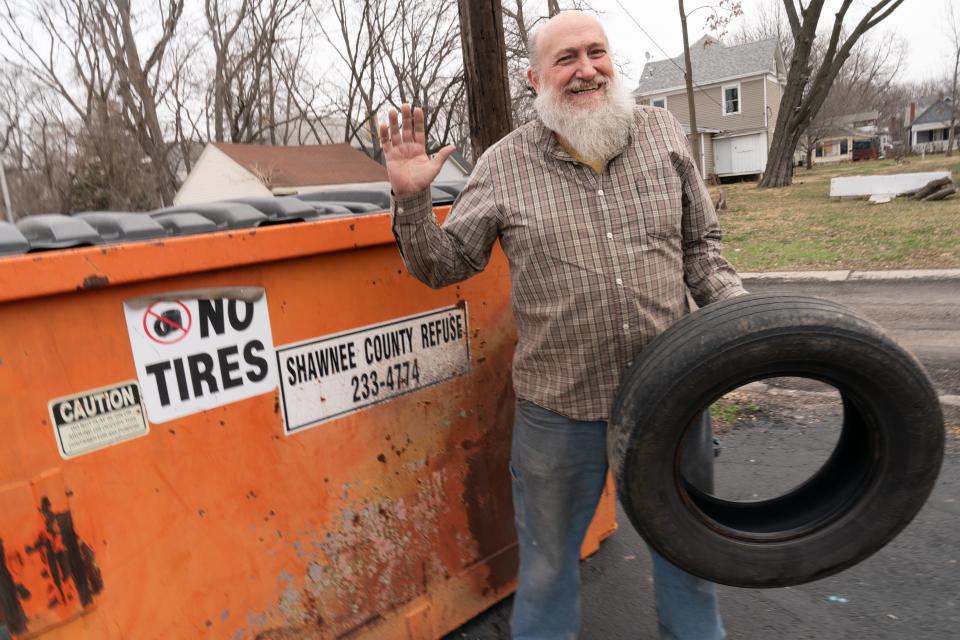
'Spare Tire Man'
Fortin sought to draw attention to the good work done by the Tennessee Town NIA's "spare tire man" — Patrick DeLapp, a longtime member who serves as that group's vice president.
"He goes around the city, picks up old spare tires and takes them to be disposed of," Fortin said.
The spare tires involved are eyesores and safety hazards, he said.
Those tires become full of water and attract mosquitoes, which spread disease, DeLapp said.
He said he picks up the tires as part of a partnership with Keep America Beautiful of Topeka/Shawnee County.
DeLapp said he has special permission to turn in "more tires than most" to be disposed of.
"I would love to teach other NIAs how to do that," he said.
DeLapp can be reached at coffeepeppy@att.net.
'It just makes me feel really good'
For Bell, the Tennessee Town NIA president, being an NIA member runs in the family.
His grandmother, Emogene Shepard, who died in 2002, was also president of the Tennessee Town NIA.
Bell has been part of that NIA since 1998. He said he feels proud to carry on the family tradition by being part of a program that works to make Topeka's neighborhoods "the best they can be."
"I think about all the people who came before me, and will hopefully come after me, and it just makes me feel really good about where we are as a city," Bell said.
Contact Tim Hrenchir at threnchir@gannett.com or 785-213-5934.
This article originally appeared on Topeka Capital-Journal: Topeka NIAs work to make life better in mostly poor neighborhoods

